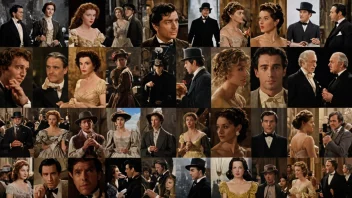What is the concept of the outsider in literature?
The concept of the outsider in literature refers to characters who exist on the fringes of society, often feeling alienated or misunderstood. These characters challenge social norms and provide readers with insights into the complexities of human experience. They often embody themes such as isolation, identity, and societal critique.
What are some notable examples of outsiders in classic literature?
- Hester Prynne from The Scarlet Letter by Nathaniel Hawthorne - Hester is shunned by her community due to her act of adultery, representing the struggles of women in a patriarchal society.
- Gregor Samsa from The Metamorphosis by Franz Kafka - Gregor’s transformation into an insect symbolizes his profound alienation from family and society.
- Holden Caulfield from The Catcher in the Rye by J.D. Salinger - As a teenager grappling with the phoniness of the adult world, Holden embodies the angst of youth.
- Meursault from The Stranger by Albert Camus - Meursault’s emotional detachment highlights existential themes and the absurdity of life.
How do outsiders contribute to the themes of their respective stories?
Outsiders often serve as a lens to explore themes such as identity, belonging, and societal critique. Their unique perspectives challenge conventional beliefs and illuminate the struggles of those marginalized by society. By portraying the outsider, authors can evoke empathy and provoke critical thought about social structures and the human condition.
What literary techniques are commonly used to depict outsiders?
- Symbolism: Outsiders often symbolize broader societal issues, such as oppression or alienation.
- Internal Monologue: Authors frequently use internal thoughts to convey the emotional turmoil and conflicts faced by outsiders.
- Character Contrast: Juxtaposing outsiders with mainstream characters can highlight societal norms and values.
Are there specific literary movements that focus on the outsider?
Yes, various literary movements, such as existentialism and modernism, prominently feature outsiders. Existentialist literature often explores themes of alienation, freedom, and the search for meaning, while modernist works frequently depict individuals grappling with disconnection in an increasingly fragmented world.
What is the relevance of outsiders in contemporary literature?
The portrayal of outsiders remains relevant in contemporary literature as it reflects ongoing societal issues, including mental health, race, gender, and sexuality. Modern authors continue to explore the lives of outsiders, giving voice to those often overlooked and fostering a deeper understanding of diversity in the human experience.
How can readers better appreciate the portrayal of the outsider?
- Engage with the text: Take time to reflect on the motivations and backgrounds of outsider characters.
- Consider the historical context: Understanding the time period in which a work was written can provide insight into the portrayal of outsiders.
- Discuss with others: Engaging in conversations about the themes and characters can enhance your appreciation and understanding.
What impact do outsiders have on readers?
Outsider characters can evoke empathy and foster a deeper understanding of diversity and human experience. By confronting societal norms, they encourage readers to question their own beliefs and consider perspectives different from their own. This can lead to personal growth and a greater appreciation for the complexities of life.
In conclusion, the portrayal of outsiders in classic literature allows us to explore fundamental themes of identity, belonging, and societal critique. Through their unique perspectives, these characters challenge us to reflect on our own lives and the world around us. As we continue to engage with and celebrate these narratives, we foster a deeper love for literature and the myriad experiences it encompasses.






